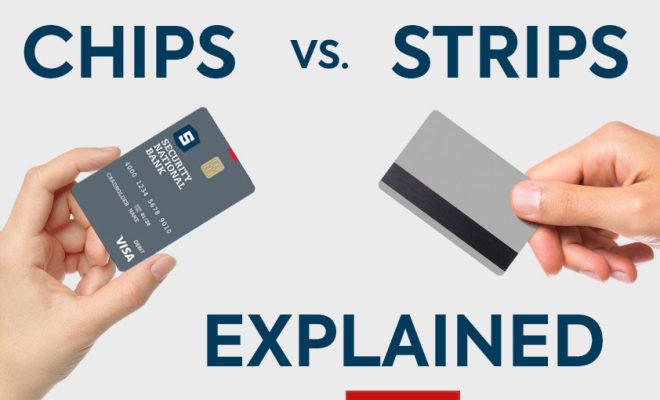What Are EMV Chips and Do They Make Credit Cards More Secure?

Introduction:
In today’s technologically advanced world, protecting your financial information is more important than ever. One significant development in credit card security technology is the introduction of EMV chips. This article will explore what EMV chips are and whether they make credit cards more secure.
What Are EMV Chips?
EMV chips, short for Europay, Mastercard, and Visa, are small microprocessors embedded in modern credit and debit cards. These chips store your card’s payment data securely and provide advanced security features during transactions. The primary purpose of EMV chips is to reduce the risks of fraud and make it more difficult for hackers to gain unauthorized access to cards, making them an increasingly common sight on credit cards worldwide.
How Do EMV Chips Work?
Traditional magnetic stripe cards store all the necessary payment information on the stripe itself. When swiped, this static information is passed on to the payment terminal. However, this process has multiple vulnerabilities that can lead to fraudulent activities such as skimming.
EMV chip cards work differently. Instead of transmitting static data like their magnetic stripe counterparts, they generate unique transaction codes each time they are used for a payment. During an in-person transaction, an EMV-enabled terminal communicates with the chip to authenticate the card and create a one-time code to proceed with the transaction. This dynamic, one-time code makes it extremely challenging for criminals to clone or skim card data during transactions.
Do EMV Chips Make Credit Cards More Secure?
The implementation of EMV chips has greatly improved credit card security in several ways:
1. Enhanced Protection Against Fraud: Since a unique transaction code is generated by the chip during every in-person transaction instead of relying on static information, it’s virtually impossible for criminals to clone your card and use it.
2. Combatting Card Skimming: Card skimming relies on capturing the static data from a card’s magnetic stripe. With the EMV chip providing dynamic information, skimming becomes significantly less effective, adding an extra layer of protection for cardholders.
3. More Complex Encryption: EMV chips utilize advanced cryptographic algorithms to keep your transactional and personal data safe from unauthorized access.
4. Global Compatibility: One of the benefits of EMV chips is their universal acceptance. By adhering to international standards, they ensure that your card remains secure no matter where you’re using it.
5. Offline Authentication: EMV chip cards also come with offline transaction authentication, which allows transactions to be securely processed even when the payment terminal is not connected to the internet.
Conclusion:
Although no credit card technology can completely eliminate fraud risks, EMV chips have dramatically improved security compared to their magnetic stripe counterparts. They have been successful in reducing fraud by providing enhanced protection against cloning, card skimming, and unauthorized access to payment data.
However, it’s essential for consumers to continue practicing safe habits such as monitoring their accounts regularly and promptly reporting any suspicious activity they may notice. While EMV chips are a significant step forward in card security, ultimately, staying vigilant is still key in protecting yourself from any potential financial harm.






